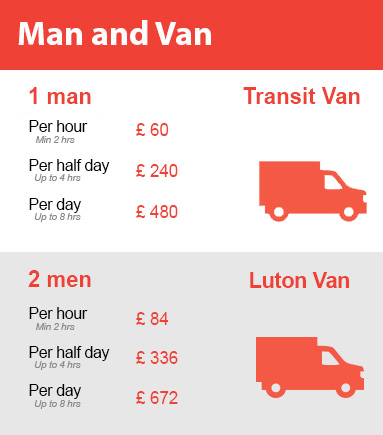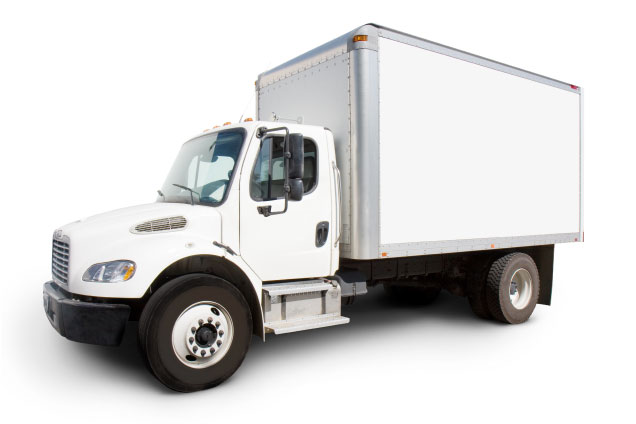Navigating the Complexities of Packing for a Successful Move
Posted on 14/06/2025
Navigating the Complexities of Packing for a Successful Move
Moving to a new home can be an exciting milestone, but it can also be a source of stress and anxiety, particularly when it comes to packing. Navigating the complexities of packing for a successful move requires strategic planning, organized execution, and the right mindset. This comprehensive guide will provide you with insightful tips, detailed steps, and expert advice on how to approach your move efficiently, ensuring a smooth transition and safeguarding your precious belongings.

Understanding the Challenges of Packing for a Move
Packing is so much more than tossing items into boxes. It's a multi-stage process that involves evaluating what to keep, how to safely transport valuables, and how to maximize space. To successfully manage a move, you must anticipate potential obstacles and develop a smart plan of action. Packing for a successful move is complex because of:
- The variety of belongings - from fragile items to bulky furniture
- Time constraints - balancing packing with daily responsibilities
- Emotional attachment - deciding what to let go
- Logistical limitations - supplies, transportation, and storage
- Packing for different destinations - local vs. long-distance moves
Understanding these hurdles will help you better prepare as you begin navigating packing complexities on your own journey.
Crafting Your Packing Plan: The Blueprint for Success
Start Early and Set a Timeline
The secret to avoiding last-minute chaos is to start packing as early as possible. Experts recommend beginning at least four weeks before your moving date. Create a detailed packing schedule, breaking down each room and item category. Use a checklist app or printable template to monitor progress and stay organized throughout the packing process.
- 4 weeks out: Sort and declutter rooms
- 3 weeks out: Gather supplies and begin packing non-essentials
- 2 weeks out: Pack remaining items, excluding daily essentials
- 1 week out: Pack essentials and clean up
- Moving day: Final walkthrough and pack last-minute items
Declutter: Lighten Your Load
Before you even touch a box, take inventory and decide what's truly worth bringing. Decluttering is crucial for navigating the packing process efficiently. Ask yourself:
- Have I used this item in the past year?
- Does it hold significant sentimental or monetary value?
- Will it fit in my new space?
Donate, sell, recycle, or discard items you no longer need. This not only reduces your moving expenses but also streamlines the packing process and gives you a fresher start in your new home.
Gathering the Essential Packing Supplies
Using the right supplies will protect your belongings and make packing much more efficient. For moving success, ensure you have:
- Sturdy moving boxes (small, medium, large, specialty sizes)
- Packing tape and dispenser
- Bubble wrap and packing paper
- Furniture blankets and stretch wrap
- Labels, colored markers, and inventory sheets
- Heavy-duty trash bags and zip ties
- Scissors and box cutters
- Gloves for handling heavy or sharp objects
Pro Tip: Invest in specialty boxes for fragile items such as mirrors, dishes, and electronics, as well as wardrobe boxes for clothes.
Packing Strategies: Maximizing Protection and Efficiency
Room-by-Room Packing
One of the most effective ways to navigate the complexities of moving is to pack one room at a time. This keeps your move structured and organized, helping you keep track of your belongings and making unpacking a breeze.
- Start with least-used rooms - Attics, basements, and guest rooms
- Label each box with the room name and brief contents
- Use color-coding or numbering systems for easy identification
Packing Tips for Different Item Types
- Books and Paperwork: Use small boxes; paper is heavy.
- Clothing: Use wardrobe boxes for hanging clothes; pack folded items in suitcases or bags.
- Fragile Items: Wrap each piece individually with bubble wrap or newspaper. Fill empty spaces with packing peanuts or towels.
- Electronics: Whenever possible, pack items in their original boxes. Use anti-static bubble wrap and label cords and accessories.
- Furniture: Disassemble bulky pieces and keep screws/bolts in labeled bags. Wrap pieces with moving blankets to prevent scratches.
- Kitchenware: Stack plates vertically, like records, and use plenty of cushioning for breakables.
Avoid Overpacking
One common mistake during the packing process is overloading boxes. An overfilled box can burst or become too heavy to lift safely.
- Keep boxes under 50 lbs for manageable lifting
- Distribute weight evenly
- Fill gaps with soft items to prevent shifting
Labeling and Inventory: The Key to Easy Unpacking
Clear labeling ensures that you, movers, or anyone helping you knows exactly where each box belongs in your new home. When navigating packing for a successful move, effective labeling saves time and reduces confusion.
- Use bold markers to write room destination and contents on each box
- Color-code boxes by room for quick sorting
- Create an inventory list with box numbers, contents, and room assignments
Pro Tip: Photograph valuable items and their boxes for insurance purposes. Consider using digital inventory apps to track your belongings.
Special Considerations for a Seamless Move
Packing Valuables and Sentimental Items
Certain belongings--such as jewelry, passports, heirlooms, and important documents--require extra care. Pack these separately and transport them with you, not in the moving truck. Use secure containers, lockable boxes, or personal safes, and keep them within reach throughout your move.
Moving With Kids or Pets?
If you have children or animals, navigating the move adds another layer of complexity. Prepare an essentials bag with snacks, toys, medication, and comfort items. Arrange for a trusted friend or family member to watch them on moving day, if possible, to minimize stress and disruption.
Hiring Professional Packers vs. DIY Packing
If your budget allows, professional packing services can save time and provide peace of mind, particularly for complicated or long-distance moves. Pros bring experience, proper supplies, and insurance coverage for your valuables.
If you choose the DIY route, enlist the help of friends or family and delegate responsibilities by room or item type. This collaborative approach can speed up the process and make the experience more enjoyable.
Navigating Packing Day: Last-Minute Tips and Best Practices
- Pack an "Open First" box - include toiletries, a change of clothes, basic cookware, chargers, and medication
- Keep cleaning supplies handy for last-minute touch-ups
- Confirm moving day logistics with movers or truck rental
- Double-check each room and storage area to ensure nothing is overlooked
- Take a moment to breathe and savor the transition to your new home

Unpacking: Making Your New House a Home
Settling in can be just as overwhelming as the packing process, but smart unpacking strategies will have you feeling at home sooner than you think. Start by tackling key rooms first--typically the kitchen and bedrooms. Use your inventory and color-coded boxes to find what you need quickly. Take your time personalizing each space to match your vision for your new home.
Conclusion: Mastering the Art of Packing for a Smooth Move
Navigating the complexities of packing for a successful move demands careful planning, patience, and a proactive approach. By starting early, decluttering, organizing supplies, labeling thoroughly, and addressing special considerations, you'll be well-equipped to handle even the most challenging moves. Whether you opt for professional help or tackle the packing yourself, remember to stay flexible and positive. With the right mindset and strategies, moving can be a rewarding step towards your next great adventure. Happy moving!
- Start early and create a clear plan
- Declutter ruthlessly
- Use high-quality packing materials
- Pack methodically, room by room
- Label and inventory for smooth unpacking
If you found this guide helpful, share it with others or bookmark it for your next move. Packing for a successful move doesn't have to be complicated--with these strategies, you'll be prepared for every step!





